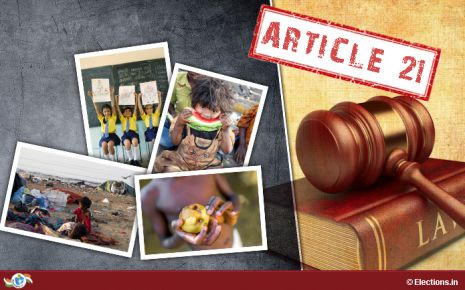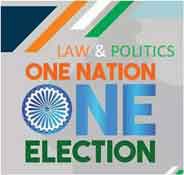Balammal v/s State of Madras AIR 1968 SC 1425: Case Analysis
In this case study, we examine two key provisions of the Indian Constitution:
firstly, Article 14[2], which protects the right to equality, and secondly,
Article 31(2)[3], which addresses the right to property. As to understand the
intricate details and ramifications of these constitutional provisions via
through the lenses of specific judicial decisions under the given case law.
The project investigates the precarious equilibrium between freedoms for individuals and social interests by looking at how the judiciary has interpreted and enforced Article 14 to ensure fairness and non-discrimination, as well as how Article 31(2) interacts with the idea of property rights.
The following case analysis aims to shed light on the changing ideas of equality and property rights within the framework of the Indian Constitution and offer an understanding of the wider context of constitutional interpretation.
Preliminary Details of the case
Case no.: AIR 1968 SC 1425, 1969(1) AnWR21, [1969] 1 SCR 90
Date of Judgement: 23.04.1968
Appellants: Balammal and Ors.
Against
Respondent: State of Madras and Ors.
Hon'ble Justice (s) Bench:[1]
Issues of the case:
Some questions that were posed to the Hon'ble court based on the submissions were:
Rules Of law applied:
Analysis:
To make Madras a better city, the administration had two plans. The first one was referred to as the "Mandavalli Scheme," and the second as the "Mowbrays Road Scheme." They made their plans public and began the procedure for acquiring the necessary land. They settled on remuneration for the affected landowners. The previous legal proceedings they had taken were still regarded as lawful even after a new statute went into force.
The government must pay the landowner the worth of the property on the day they formally declared that they were seizing it, according to a provision of this new law. Alternatively, if the average land value for the five years just prior to that day was less, they might pay a lesser sum. The landowner would furthermore get a five percent "solatium" payment, according to this statute.
In the case of Vajravelu Mudaliar v. Special Deputy Collector, Madras,[8] the court examined a brand-new statute.This law changed the terms under which the government might appropriate land for public projects.
Based on the tenets of Article 14 of the Indian Constitution, the court found a specific flaw in this statute. As a basic right, Article 14 ensures protection against discrimination and equality before the law. It guarantees that everyone is treated equally and sensibly, without making any unfair or unjustifiable differences. Different treatment was given to people whose property was seized for housing developments as opposed to those who's land had been taken for other forms of public uses. The basis for this differentiation was the kind of enterprise for which the property was being purchased.
The court then considered whether this distinction had a feasible and logical justification. They discovered that treating these two groups differently lacked an important rationale. There was no apparent distinction between land appropriated for housing plans and property appropriated for other public uses that would support such discriminatory treatment.
In "State of West Bengal v. Mrs. Bela Banerjee," [9]a legal controversy centred upon the "West Bengal Land Development and Planning Act 21 of 1948." The main goal of the passing of this law was to help those who had moved to the state of West Bengal from other places. However, there was a restriction on how much compensation the government could give to the landowners. The value of the land on a specified date-December 31, 1946-was what was used to calculate the maximum compensation sum. To put it another way, the government would not spend more than the property was worth on that specific day.
The fairness of this clause was questioned by the court after it thoroughly analysed it. They thought it was unfair since the compensation was determined by the worth of the property on a certain period in time. In essence, the court decided that it was unfair to base the compensation on the worth of the land as of a certain time in the past. They came to the conclusion that the values contained in Article 31(2) of the Indian Constitution were violated by this strategy.
Article 31(2) lays down guidelines for how the government might seize people's property while making sure that just compensation is given. The statute was judged to violate constitutional principles that protect property rights and provide just compensation by tying payments to a predetermined date without taking into account the current situation.
Conclusion:
It was held that the law was unjust since it treated people in different ways for no justifiable reason. It's akin to the practise of punishing two individuals differently for the same offence when there isn't any justification for doing so. This section of the statute was ruled invalid by the court. It violated the equality beliefs outlined in Article 14 of the Constitution. Due to the court's ruling, the government was no longer permitted to treat these two categories of landowners differently in accordance with this particular legal provision.
As for under Article 31(2), in the light of it the decision was taken and understood from the view of the landowners equally incorporating the facts in their favour.
As a result, the State's appeals were unsuccessful and were dismissed with costs. In addition to the compensation granted to them, the Land Acquisition Act's Section 23(2) granted the owners' appeals a 15% solatium on the laud's market value.
Bibliography:
The project investigates the precarious equilibrium between freedoms for individuals and social interests by looking at how the judiciary has interpreted and enforced Article 14 to ensure fairness and non-discrimination, as well as how Article 31(2) interacts with the idea of property rights.
The following case analysis aims to shed light on the changing ideas of equality and property rights within the framework of the Indian Constitution and offer an understanding of the wider context of constitutional interpretation.
Preliminary Details of the case
Case no.: AIR 1968 SC 1425, 1969(1) AnWR21, [1969] 1 SCR 90
Date of Judgement: 23.04.1968
Appellants: Balammal and Ors.
Against
Respondent: State of Madras and Ors.
Hon'ble Justice (s) Bench:[1]
- Justice J.C Shah
- Justice Vaidynathier Ramaswami
- The Madras City Improvement Trust Act 16 of 1945 was enacted by the
Indian government of the Madras province (now known as Tamil Nadu) in 1945.
This rule was created to improve the city of Madras (now Chennai) by
decreasing congestion and enhancing its general state.
In accordance with this law, they established a body named the "Board of Trustees." This body was granted the authority to enforce the law. Making a "Town Expansion Scheme" was one of the crucial things this board could perform. This plan mainly talked about improving the city by altering the layout of things like buildings and roadways.
- The board had to inform everyone about this plan as soon as it was
created. They executed this by recording it in writing and publishing it in
a government publication known as the "Government Gazette."[4] They then
listened to people's perspectives on the plan. People possessed a say in
what they liked and didn't like about the idea.
The government considered the comments after receiving input from the public and might alter the plan if necessary. The idea would then be given official approval by the government, if approved. They could alter it or leave it unchanged. Once they arrived at their decision, they would send out another notice to let everyone know.
- The decision-making committee (the "Board") then began to put the
strategy into action. They started to carry out the improvements for the
city they had envisioned. The Board was granted a specific power under the
"Section 71." [5]They were able to purchase land as per this, but only with
the approval of the government. They utilised this authority to acquire the
land that they need in order to carry out the plan's improvements.
- The Madras City Improvement Trust Act's "Schedule" detailed
modifications to the "Land Acquisition Act, 1894," which governs the
purchase of property for public purpose. In one section of the Schedule,
especially "clause 6(2)," it was stated that the government was exempt from
paying an additional 15% of the property's worth on top of the standard
payment if it was taking land for certain purposes.
If the land they are seizing is in a region the government has designated as "slum," and the owner of the land doesn't really reside there or utilise the property, then this particular regulation applies.
But the land here being talked about didn't meet the terms of the specific rule therefore the government had to pay extra 15% on top of the regular value they were bound to pay.
- In addition to using the Land Acquisition Act, the government planned to
seize the land for a "Town Expansion Scheme". Landowners claimed that the
Land Acquisition Act still required them to receive the additional 15%
payment.
However, Act 37 of 1950, another statute, prohibited landowners from receiving this additional payment if their property was being acquired for a Town Expansion Scheme.
Issues of the case:
Some questions that were posed to the Hon'ble court based on the submissions were:
- Whether or not the owners are eligible for a 15% solatium bonus ahead of the land's market value for forcible acquisition; and
- Whether the evidence supports the amount of compensation given to the claimants for the forced seizure of the land.
Rules Of law applied:
- Article 14 of The Constitution of India, 1949 [6]– "Equality before law
The State shall not deny to any person equality before the law or the equal
protection of the laws within the territory of India Prohibition of
discrimination on grounds of religion, race, caste, sex or place of birth"
- Article 31(2) of The Constitution of India, 1949[7] – "When the State
acquires property, it must pay compensation to the owner. The compensation
must be a fair and just amount, determined in accordance with the principles
laid down in the law. The law must provide for the determination of the
amount of compensation, and the principles on which it is based.
- As for under The Land Acquisition Act, 1894 the sections that are applied are Section 4, Section 6, Section 23, Section 47, Section 53.
Analysis:
To make Madras a better city, the administration had two plans. The first one was referred to as the "Mandavalli Scheme," and the second as the "Mowbrays Road Scheme." They made their plans public and began the procedure for acquiring the necessary land. They settled on remuneration for the affected landowners. The previous legal proceedings they had taken were still regarded as lawful even after a new statute went into force.
The government must pay the landowner the worth of the property on the day they formally declared that they were seizing it, according to a provision of this new law. Alternatively, if the average land value for the five years just prior to that day was less, they might pay a lesser sum. The landowner would furthermore get a five percent "solatium" payment, according to this statute.
In the case of Vajravelu Mudaliar v. Special Deputy Collector, Madras,[8] the court examined a brand-new statute.This law changed the terms under which the government might appropriate land for public projects.
Based on the tenets of Article 14 of the Indian Constitution, the court found a specific flaw in this statute. As a basic right, Article 14 ensures protection against discrimination and equality before the law. It guarantees that everyone is treated equally and sensibly, without making any unfair or unjustifiable differences. Different treatment was given to people whose property was seized for housing developments as opposed to those who's land had been taken for other forms of public uses. The basis for this differentiation was the kind of enterprise for which the property was being purchased.
The court then considered whether this distinction had a feasible and logical justification. They discovered that treating these two groups differently lacked an important rationale. There was no apparent distinction between land appropriated for housing plans and property appropriated for other public uses that would support such discriminatory treatment.
In "State of West Bengal v. Mrs. Bela Banerjee," [9]a legal controversy centred upon the "West Bengal Land Development and Planning Act 21 of 1948." The main goal of the passing of this law was to help those who had moved to the state of West Bengal from other places. However, there was a restriction on how much compensation the government could give to the landowners. The value of the land on a specified date-December 31, 1946-was what was used to calculate the maximum compensation sum. To put it another way, the government would not spend more than the property was worth on that specific day.
The fairness of this clause was questioned by the court after it thoroughly analysed it. They thought it was unfair since the compensation was determined by the worth of the property on a certain period in time. In essence, the court decided that it was unfair to base the compensation on the worth of the land as of a certain time in the past. They came to the conclusion that the values contained in Article 31(2) of the Indian Constitution were violated by this strategy.
Article 31(2) lays down guidelines for how the government might seize people's property while making sure that just compensation is given. The statute was judged to violate constitutional principles that protect property rights and provide just compensation by tying payments to a predetermined date without taking into account the current situation.
Conclusion:
It was held that the law was unjust since it treated people in different ways for no justifiable reason. It's akin to the practise of punishing two individuals differently for the same offence when there isn't any justification for doing so. This section of the statute was ruled invalid by the court. It violated the equality beliefs outlined in Article 14 of the Constitution. Due to the court's ruling, the government was no longer permitted to treat these two categories of landowners differently in accordance with this particular legal provision.
As for under Article 31(2), in the light of it the decision was taken and understood from the view of the landowners equally incorporating the facts in their favour.
As a result, the State's appeals were unsuccessful and were dismissed with costs. In addition to the compensation granted to them, the Land Acquisition Act's Section 23(2) granted the owners' appeals a 15% solatium on the laud's market value.
Bibliography:
- Legal databases for judgement
- SCC Online
- Manupatra
- LegitQuest
- M.P Jain Indian Constitutional Law, 8th edition, Lexis Nexis.
- Internet Sources- www.lawplanet.in
- SCC, Balammal V. State of Madras, 1968
- The Constitution of India, Bare Act, 2023 ver
- The Constitution of India, Bare Act, 2023 ver
- Known Public newspaper in that period, source: google
- The land acquisition act, 1894
- The Constitution of India, 1949
- Via: https://www.adda247.com/upsc-exam/article-31-indian-constitution/
- SCC Online
- SCC Online
Law Article in India
Legal Question & Answers
Lawyers in India - Search By City
LawArticles
How To File For Mutual Divorce In Delhi

How To File For Mutual Divorce In Delhi Mutual Consent Divorce is the Simplest Way to Obtain a D...
Increased Age For Girls Marriage

It is hoped that the Prohibition of Child Marriage (Amendment) Bill, 2021, which intends to inc...
Facade of Social Media

One may very easily get absorbed in the lives of others as one scrolls through a Facebook news ...
Section 482 CrPc - Quashing Of FIR: Guid...

The Inherent power under Section 482 in The Code Of Criminal Procedure, 1973 (37th Chapter of t...
The Uniform Civil Code (UCC) in India: A...

The Uniform Civil Code (UCC) is a concept that proposes the unification of personal laws across...
Role Of Artificial Intelligence In Legal...

Artificial intelligence (AI) is revolutionizing various sectors of the economy, and the legal i...








Please Drop Your Comments